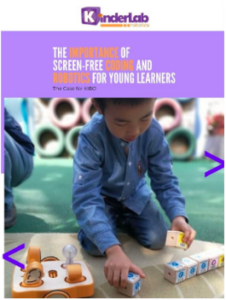Mashable: Are Coding Robots Worth Your Kids’ Time?
Today’s toy companies are now marketing their coding toys differently. “Your kids will have fun, but they’ll also be prepared for the jobs of the future.”
“A study from The Toy Association says 67% of parents believe that toys with a STEM or STEAM (that’s science, technology, engineering, art, and math) focus are the primary way to encourage science and math development in young children. Coding robots and toys aren’t a category the industry tracks, but the numbers are growing, according to the industry group.
If toy companies have their way, parents will be snagging coding robots for their kids during the upcoming holiday shopping season, hoping their children develop even a basic understanding of coding fundamentals. Technology education proponents say it’s not a misplaced dream.
Just as coding toys are filling up online carts, so are coding camps and programs for kids in storefronts across the country. A growing number of school districts are also adding computer science instruction at all grade levels. In the last year, according to the 2019 State of Computer Science Education, 33 states have passed 57 new laws and regulations that promote the subject.
Marina Umaschi Bers, a child development and computer science professor at Tufts University, agrees that kids need to be riding bikes and making mud pies. But, while teaching teens to code might be about preparing them for a career, for young children the focus should be on helping them think in new ways and fostering their creativity, she says.
Bers helped develop the popular ScratchJr language for young children and KIBO, a screen-free coding robot found in classrooms around the world. She argues that coding should be considered another literacy, taught when kids learn to read.
“Coding is not only problem solving, coding is expression,” she said. “When you are making something, you are creating a product to tell the world about what you like, who you are, your passions.”
Read the full article.



















